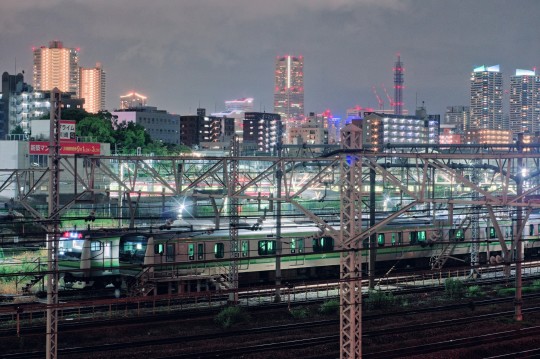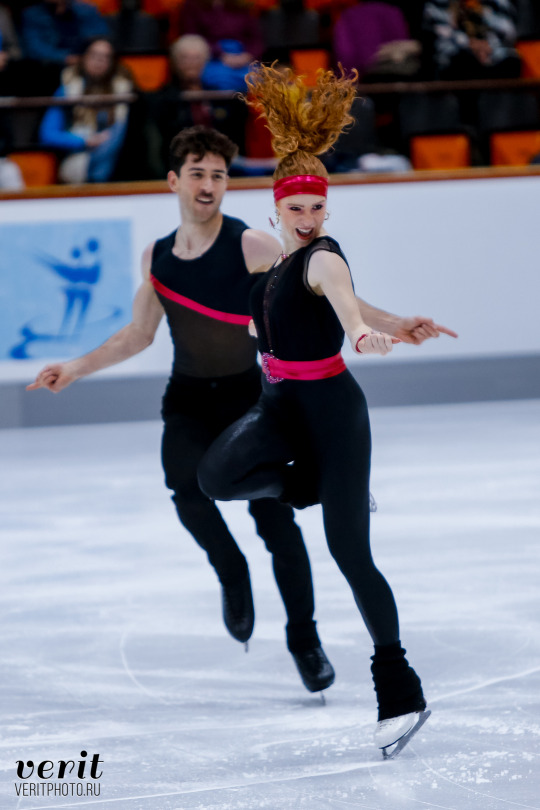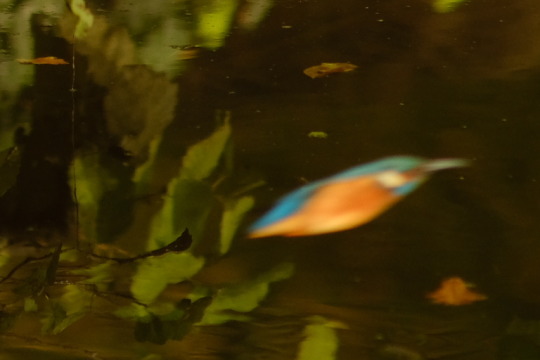#manual focus lens
Video
white, pink and purple by Michael Khan
Via Flickr:
Seen at Bundesgartenschau 2023, Mannheim, Baden Württemberg, Germany Camera: Leicaflex SL2 (Leica ID 10022), made in 1975 Lens: Leica Summicron-R-II 50mm (11216), made in 1978 Kodak Portra 160 professional grade colour negative film Developed and scanned by
#FILM#35 mm Film#ANALOG#manual focus lens#German Cameras#Bundesgartenschau#Mannheim#Baden Württemberg#Germany#vintage film camera#vintage lens#It's a Leica!#Leicaflex SL2#Leica Summicron-R 50#Kodak Portra 400#www.meinfilmlab.de#Bokeh#flowers#flickr
4 notes
·
View notes
Text
Stop Down For Better Results. TTArtisan 50mm F2 Review
When patiently used, this inexpensive lens can produce really good images
It’s not quite a pancake lens, but the TTArtisan 50mm f2 lens is almost compact enough to be called one. A little bigger than an artisanal macaron, the lens doesn’t feel cheap in any way to hold. With a full metal body and clicked aperture ring, you’d be surprised to know that the lens retails for less than $80. But can it perform as well as it looks and feels?
(more…)

View On WordPress
#50 mm#50mm#50mm f2#50mm lens#aperture ring#cheap gear#Cheap Lens#cheap lenses#focus ring#Inexpensive#Inexpensive lens#lens#Manual Focus#Manual Focus Lens#manual lens#nikon z mount#Nikon Z mount lenses#street photography#TT Artisan#ttartisan#TTArtisan 50mm#Z Mount#Z mount lenses#zone focus
1 note
·
View note
Text

2022年6月
横浜線の車庫
#横浜市#yokohama#train#横浜線#pentax#夜景#night view#pentax k-1 mark2#mf lens#old lens#vintage lens#manual focus#単焦点#prime lens#original photography
68 notes
·
View notes
Text


he yawn
#hiiii 50mm lens i've missed you#unfortunately my manual focus skills are rusty & the af on this camera is being a little janky#hoping i just need to adjust settings and it's not a real issue#id in alt#yuri the cat#astralpost
2 notes
·
View notes
Text






Lou Terreaux & Noe Perron — Flashdance RD at Nebelhorn Trophy 2023
#lou terreaux#noe perron#terreaux perron#ice dance#figure skating#fsphoto#im just really happy with those photos considering i was shooting on manual focus LMAO (bc i dropped my lens and AF died)#that's how i discovered that actually if you can manage to get MF to focus it's better and sharper like here#like look at her hair dang#team france#nebelhorn trophy 2023
3 notes
·
View notes
Text
got my instant camera today (!!) and I love her dearly already but you're supposed to push the lens in to turn it off??? VERY extremely counter to what not to do to literally any other camera lens ever.
#i doubt that many ppls first camera experiences are a fuji film instax camera. but i do worry if then people think its ok to push a lens in#literally dont turn a camera lens or push it in or anything. you risk damaging it!!#obviously if its an analogue camera then you gotta turn it manually#or any other lens that requires manual turning#for the focus
3 notes
·
View notes
Text




They broke your defenses.
-- No…
No, you let them.
Do you know what happens, when they catch up to you?
Assuredly, it is worse than death.
They break your heart.
"Let's say you've swallowed a bad thing and now it's got its hands inside you. This is the essence of love and failure."
Catharsis through photography.
I don't particularly care for explaining symbolism, but I think a lot is lost in my personal work if I don't occasionally.
Hands are expressive. They are often a nonverbal tell of what one is thinking, feeling. They also.. want to touch, want to hold, want to intertwine. And I cannot, I am not allowed that with the person I have beholden myself to at this current point in time. And I may never be afforded that.

I do not flag on the left, whether it be a handkerchief, cuff, ribbon, wristband. The ribbon here is, yet, on my left wrist. I have to be my own commanding officer, I am alone, I have no one over me, as much as I would like for there to be. I am both the superior and the subordinate. The sadist and the masochist. I have to remain the one in charge for the time being. It is a facade; a farce for me to flag on the left. It fails me, regardless of the front I put up.

My K98 stock is just that. A stock. It is hollow. There are no gun parts. I sleep with it in bed like a stuffed animal. It offers no protection, only false security. My defenses offer no protection. It is also a facade.
My heart aches.
#photography#my photography#tw: blood#self portrait#I mean technically it's a self portrait#personal works#it was cathartic at least#it did do its job#these weren't taken with the swamp lens unfortunately#swamp lens is manual focus only and I uhh.. sort of needed autofocus#gosh Sage just grow more arms then manual focus wouldn't matter
9 notes
·
View notes
Photo

omg does anybody know what bird this is. there's two of them zooming around. and they're so. vivid!!!
#i know. i know. its a comically bad picture but like#they're so fast!!!#also i'm using a forty year old manual focus lens so#its a miracle i even got a semi glimpse of it#f
5 notes
·
View notes
Photo

#mine#my work#photograph#photography#my photography#quiet moments#documentary#prime lens#manual focus#old lens#sony#a7#voigtlander#color skopar#35mm#f2.5
4 notes
·
View notes
Video
a short story written in autumn..... by dan leszek koludzki
Via Flickr:
OLYMPUS DIGITAL CAMERA E-PL5 + Jupiter 11 135mm F/4.0
#sunlight#autumn#November#snail shell#Selective Focus#Natyre photography#Manual lens#Manual focus#Beauty In Nature#Outdoors#No People#cloudy day#flickr
5 notes
·
View notes
Video
Another Mercedes that never made it to production by Michael Khan
Via Flickr:
Mercedes Benz C-111-II prototype, 1970 Originally, this car was fitted with a Wankel type piston-less rotary engine, but Daimler Benz was dissatisfied with the lack of longevity of the power plant and gave up on the concept. The car was later used as a test bed for high-power Diesel motors. Seen at the Mercedes Benz Museum, Stuttgart, Baden Württemberg, Germany Camera: Leicaflex SL2 (Leica ID 10022), made in 1975 Lens: Leica Summicron-R-II 50mm (11216), made in 1978 Kodak Portra 400 professional grade colour negative film Developed and scanned by www.meinfilmlab.de
#FILM#35 mm Film#ANALOG#manual focus lens#vintage film camera#vintage lens#It's a Leica!#vintage car#German cars#German Cameras#Leicaflex SL2#Leica Summicron-R 50#Kodak Portra 400#www.meinfilmlab.de#orange#flickr
0 notes
Video
Fog in Macondo.2 by •°°••°Aureliano Buendía°••°°•
Via Flickr:
via Lomo OKC1-22-1
#Fujifilm#X-T30#LENKINAP#LOMO#OKC1-22-1#ОКС1-22-1#old lens#retro lens#vintage lens#manual focus#manual lens#russian lens#soviet lens#cinematic lens#cinema lens#cine lens#landscape#small landscape#beyond the city country#seat#beautiful#Russia#pond#trees#tree#woods#park#outdoor#colorful#nature
0 notes
Text

2023年 元旦
鶴見川と富士山
81 notes
·
View notes
Text
Focusing the Lens: A Journey through Technological Evolution
Throughout the history of photography, the lens has played a pivotal role in capturing moments and creating art. From the humble beginnings of manual focus lenses to the revolutionary advent of autofocus technology, the evolution of lens technology has been nothing short of remarkable. As a seasoned lens manufacturer with 40 years of experience, we have had a front-row seat to this transformative journey. In this in-depth article, we will embark on a captivating exploration of the fascinating progression of lens technology and its profound impact on the world of security.
The Birth of Manual Focus:
In the early days of photography, lenses were simple and rudimentary, requiring photographers to engage in the delicate art of manual focus. These early lenses were solely designed for photography, and their operation necessitated the photographer's hands-on involvement. Adjusting the focus ring was the primary means of achieving sharpness, a process that demanded skill, precision, and patience.
These early lenses, while limited in their application to photography, laid the crucial groundwork for the evolution of lens technology. The concepts and mechanisms developed during this era set the stage for what was to come. Fast forward to today, and we find that manual focus lenses have come a long way. Modern iterations of manual focus lenses have evolved into sophisticated tools, finding applications in diverse fields such as robotics, machine vision, inspection, and laboratory work.
These lenses have grown into versatile instruments, offering enhanced precision and control to meet the demands of an ever-evolving world. They continue to play a crucial role in various industries, even in the age of autofocus, where their unique attributes are prized for specific applications.
The Advent of Autofocus:
The lens technology landscape changed drastically with the introduction of autofocus. This monumental leap brought about a revolution in the capabilities of the security industry and photography as a whole. Autofocus systems employ a combination of mechanical, optical, and electronic components to automatically adjust the lens focus, eliminating the need for manual intervention. The result is quicker and more accurate focusing, ensuring optimal image quality and placement.
Suddenly, organizations across the spectrum could enhance their security measures. With autofocus lenses, they could secure all corners of their properties, both from various heights and angles. This transformation brought about a new era of convenience and efficiency in security and surveillance.
The integration of autofocus technology into photography also opened doors for creative exploration, enabling photographers to concentrate on composition and subject interaction without the distraction of manual focus adjustments. The significance of this development in the evolution of lens technology cannot be overstated.
Phase Detection vs. Contrast Detection Autofocus:
The world of autofocus is not monolithic; it is divided into two primary categories: phase detection autofocus (PDAF) and contrast detection autofocus (CDAF). These systems employ different techniques to achieve the common goal of precise focusing, and each has its own strengths and applications.
PDAF relies on a dedicated sensor to measure the phase difference between light rays, resulting in rapid and accurate focusing. This technology has found its place in scenarios where speed and precision are paramount. For security systems that need to respond swiftly to changes in the environment, PDAF is a valuable asset.
On the other hand, CDAF takes a different approach by analyzing the contrast levels within the image to achieve focus. While it may not be as quick as PDAF, CDAF excels in situations where a slower and more deliberate focus adjustment is acceptable. The choice between these autofocus methods depends on the specific requirements of the application, and both have their roles in the evolving landscape of lens technology.
Continuous Autofocus and Tracking:
As lens technology continued to advance, it gave birth to the concept of continuous autofocus (AF-C). This feature enables a lens to continuously adjust focus as the subject moves, making it invaluable for capturing dynamic and fast-paced scenes. Whether in a sprawling sports complex or a bustling college campus, AF-C technology ensures that critical moments are captured with precision.
The evolution of AF-C has seen it become increasingly accurate and responsive. Today, it is a vital tool for numerous applications beyond sports and events. In the realm of security, where monitoring and tracking are of utmost importance, this technology enhances the capability to monitor and respond to changing conditions in real-time.
Silent and Ultra-Fast Autofocus Motors:
In addition to advancements in autofocus methods, lens manufacturers have made significant strides in the development of silent and ultra-fast autofocus motors. These cutting-edge motors have redefined the user experience by ensuring near-silent operation and rapid focusing. Gone are the days of noisy, distracting autofocus mechanisms that could disrupt a quiet environment.
This development is particularly beneficial in scenarios where discretion is essential. For instance, in environments like busy warehouses with conveyor belts, the ability to focus quickly and quietly can make a significant difference in capturing critical moments without disturbance. The reduction of lag between pressing the shutter button and image capture enhances efficiency and overall image quality.
The Impact on Security:
The evolution of lens technology from manual focus to autofocus has had a profound impact on security. The ability to secure properties from various angles and heights with speed and precision has transformed how we monitor and protect our environments. Whether in the context of large-scale security systems or in more specialized applications, lens technology has played a pivotal role in ensuring the safety of our cities and communities.
In large sports complexes, college campuses, transportation hubs, and public spaces, autofocus technology has become an indispensable tool for maintaining security and responding to potential threats swiftly. The dynamic nature of security demands the ability to adapt rapidly, and modern lens technology equips security professionals with the tools they need to meet these challenges head-on.
Beyond security, the evolution of lens technology has had a significant impact on the quality control and inspection processes in various industries. From manufacturing to healthcare, the ability to capture high-resolution images with precision and efficiency has led to improved quality assurance and error detection.
Looking to the Future:
The evolution of lens technology is far from over. As lens manufacturers, we continue to push the boundaries of what is possible. Our mission is to provide businesses with the best lenses to deliver top-notch security and quality control. With ongoing advancements in technology, we can anticipate further breakthroughs in lens design, materials, and functionality.
As the world becomes increasingly reliant on surveillance and monitoring for security and safety, the role of lens technology will continue to grow. New challenges will arise, and the lens will remain at the forefront of innovation in addressing these challenges.
In conclusion, the evolution of lens technology from manual focus to autofocus represents a compelling journey of innovation and progress. It has transcended the realms of photography to become a critical component in security, surveillance, and quality control across a wide range of industries. As we move forward, the future promises even more remarkable developments in the world of lens technology, ensuring that our cities and communities remain safe and our images captured with unprecedented clarity and precision.
To Know More About Manual focus lenses Please visit below link.
Link: http://www.mvrpl.com/
0 notes
Text
kinda freaked out that one of the control wheels on my camera is not working. I'm gonna try to disassemble it and see if I can fix it because I was shooting last weekend without being able to control aperture/ISO/shutter speed/exposure compensation manually and A Bitch Likes To Be In Control
#I reaaallllyyyyyyyyy like to have direct control over focus and depth of field#focus is still good bc that's on the lens#but let me take that aperture alllll the way out Please Please#hopefully it's serviceable? i like my camera I've had it for like 10 years now and I like taking it to inhospitable environments for cameras#it's been having more problems lately#(yes this is directly related to me taking it to the desert and the ocean and such)#but it's important to me to not have to be too precious with it#photography for me is more about having it with me when I see beautiful things or things I enjoy - I photograph while I hike. I don't hike#in order to photograph.#so I don't want something I really need to baby. and I don't wanna spend a thousand dollars lmao#also some newer cameras in this quality range seem to want to take more things away from you#i am particular about wanting a viewfinder (so nothing mirrorless) and wanting certain autofocus options#i usually don't shoot full manual bc most often my subjects are moving and I'm not fast enough to adjust for that / I don't enjoy it#but I do adjust ISO and aperture manually and let the camera pick the shutter speed#then adjust exposure comp or aperture if I need to
1 note
·
View note
Text

Waiting for the shops flowers to open in the morning.
0 notes

